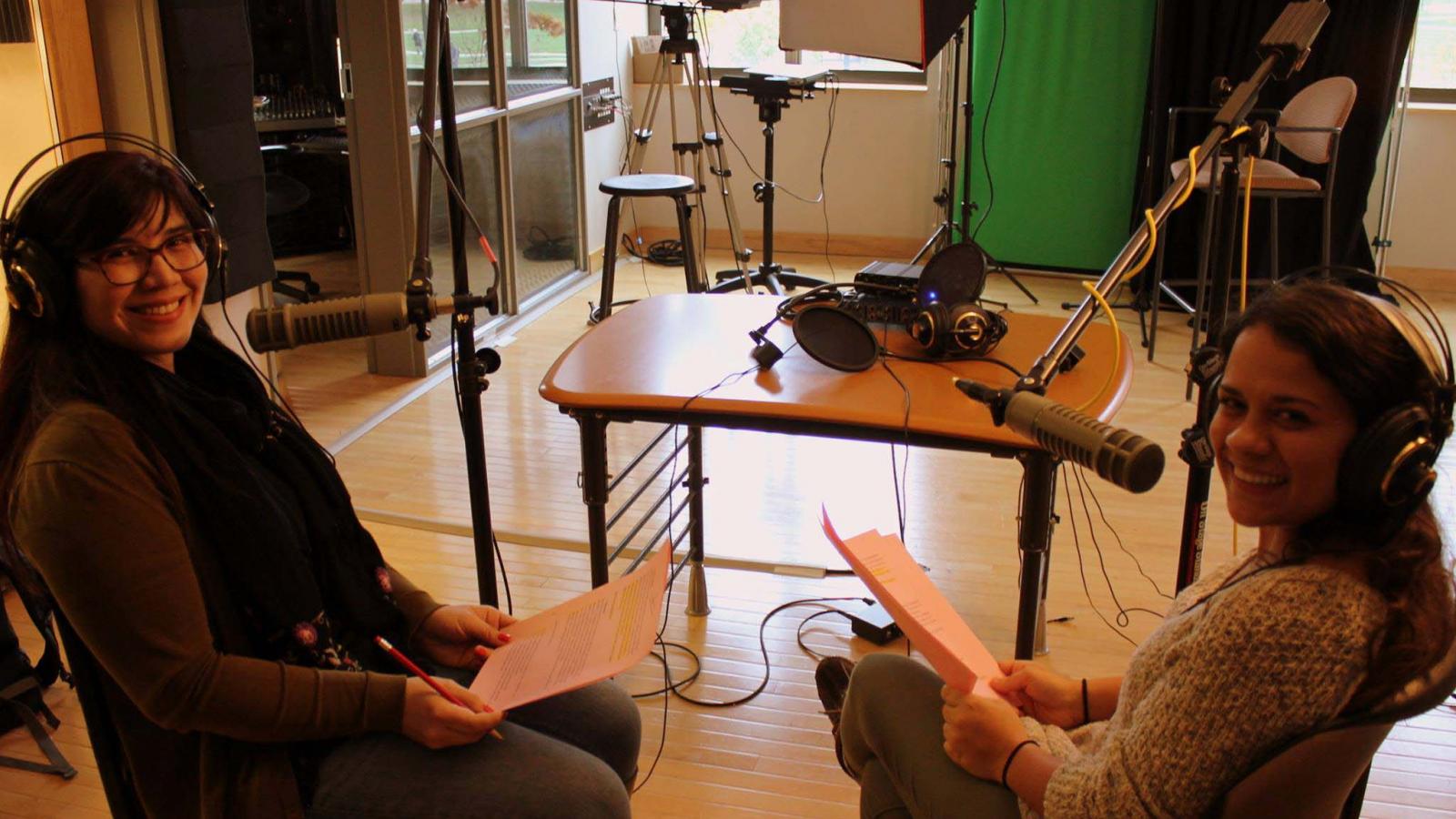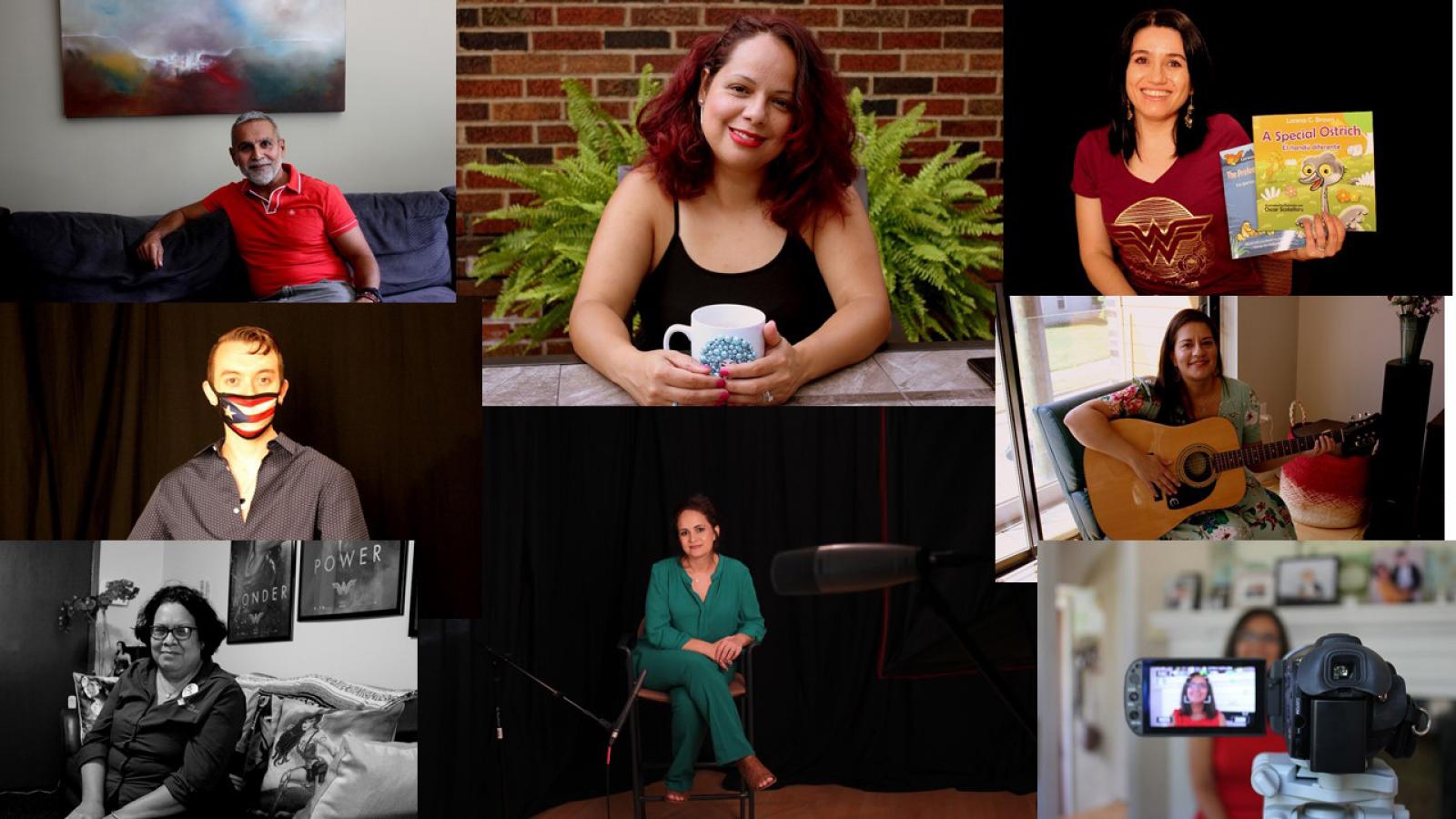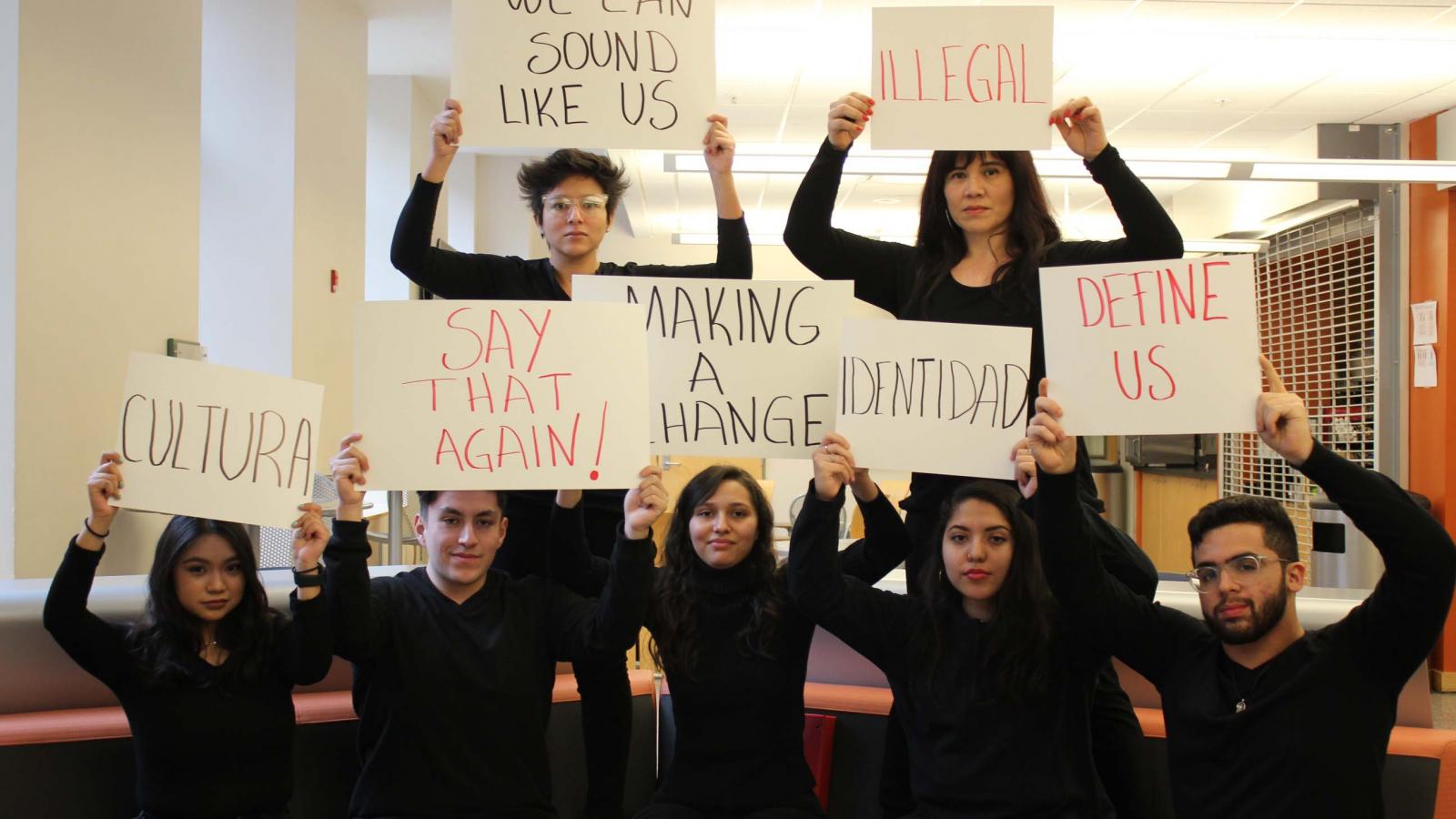Faculty Spotlight: Elena Foulis
Elena Foulis directs the Heritage Language and Service-Learning program in the Department of Spanish and Portuguese. Last year, she received a Community Engaged Scholarship award for her work with students developing oral histories, performances and community dialogues about Latinx in Ohio. Latin@Stories in Ohio, a bilingual iBook including video, audio, maps and pictures, was published in 2014. Oral histories also feature in her podcast series, OhioHabla.
What does engaged scholarship mean to you? Why is it important?
It means that I am dedicated to producing critically engaged scholarship that is committed to the public and civic purposes of higher education and the community at large. Every project I produce serves my students and the Latina/o/x community and it serves as a source for dialogue, for knowledge production, for interactions that are real and sometimes difficult, but that address pressing issues about belonging, language justice, and identity politics.
You’ve been collecting oral histories in Ohio for more than seven years. What are some of the things you’ve discovered in that research?
OMG, haha! I cannot believe it has been 7 years since I started this project. It has been so fulfilling to collect histories of the Latina/o/x community, to see myself and my students reflected in some of these histories, and to learn together about each person that gifts us their story. We have heard and, perhaps have said, that the Latinx experiences is complex and diverse, and that is so evident in this work. I record stories from different generations, different nationalities, race, and genders. I document different cultural and religious practices and how we embody those practices, which also and always include language. Aside from that, I’ve discovered how generous people are, and how, when I do this work with students, they learn so much from those encounters.
Can you describe how you use oral histories in the classroom? What do students learn from recording oral histories?
I have traveled across the state with students to collect oral histories. The first year, we were strictly collecting, listening, and learning, and building community both as teacher-scholar, and by our interactions with the Latina/o/x community. I then produced an iBook that incorporated some of these histories, and since then students use it in my service-learning class to learn about the community before they work directly with different Latina/o/x serving organization across the Columbus area. Each semester, students have collaborated in different ways. They have taken pictures, helped with the necessary paperwork, and they have also been trained to interview and record the oral histories. Last semester, thanks to or because of Covid, students worked virtually with the existing archive and we have been working to build a more inclusive website and archiving system that is fully bilingual. This has been exciting because students acquire new skills and provide feedback about how to make the archive more accessible to our community. It has taken, and it will take, different forms as we are able to integrate new technology, perhaps art and more photographs into the publicly available archive.
How do you put together a community dialogue? What do you see as the outcomes of that process?
I’ve done it in two ways. I’ve presented about the oral history project in community events and forums, I’ve looked for opportunities to present the work outside the traditional academic settings or conferences. Here, we have opportunity to learn and listen to community feedback, to answer questions and to, sometimes, build partnerships. I think this is one of the key outcomes, especially as an engaged-scholar.
I also direct a performance group called PerformancerUS, which creates and builds primarily oral performances based on the oral history archive. I work with Latina/o/x students and co-create by listening to the oral histories and integrating our own stories into the performance. The nature of this work is that is performed live, with an audience who technically is also part of the processes, because as a group we engage with the audience about the topic we present before the performance and then after. The outcome is to engage in community dialogue that seeks to build connections and understanding among different groups and experiences. It also has the purpose to build leaders, as each of the students is a co-creator and an expert in the work we present.
How have you adapted your work during the past year’s pandemic? What impacts have you noticed among Ohio’s Latinx communities?
In the Fall semester, I was able to continue to collect oral histories, but I traveled alone and with proper precautions. I often interviewed people outdoors or in the studio, following all the protocols. For the past two semesters, it has been important to collect the experiences of our community during the pandemic, so I’ve collected over 20 interviews that include this focus. Just as our community is diverse, so are our experiences. Latina/o/x from lower income households, non-English dominant, and/or who are essential workers have had a greater negative impact, either because they lost jobs or because they were working in high-risk jobs with little to no PPE. If they were sick and had to go to the hospital, they often did not have access to care in Spanish. But these experiences do not represent everyone, some of us were not as impacted, financially, by it or our ability to access reliable information was easy. There are a lot of disparities in our community. We are producing a performance based on these experiences.
You’ve written about how texts by minority women appeal to readers beyond their heritage communities. Can you envision a role for a Center for Ethnic Studies in that process?
There is something beautiful that happens when see connections between other’s experiences and our own. There is real and almost palpable personal growth, when we allow ourselves to learn from others, and to relate and understand perspectives that are different than our own. At different times, I’ve taught literature from African-American, Latina, Asian and Native-American women writers, and while there are experiences and histories that I don’t share with the authors, there are many that resonate. I like teaching and discovering what my connection is to the cultural practices or social and political concerns of communities from different heritages. And as an immigrant myself, I am interested in seeing how the histories of other immigrant communities are similar or different. I think the CES facilitates these conversations and provides resources to researchers, teachers, and students to learn and grow and find projects that are relevant to what they are studying or researching.
How can a land-grant institution like OSU become more responsive to the diverse communities it serves?
The land-grant university's mandate to serve society, increase higher education accessibility, and reach all people. While I am attentive to these mandates in my work with the Latina/o/x community, we need to provide a more systemic way of engaging and making sure that our work is not extractive. We need to make sure that there is a designated person who has built trust, semester after semester, year after year, to listen, learn, and connect with the different communities across the state, so we have meaningful, fruitful, and lasting partnerships. And we need to approach this with cultural humility and respect.
Voices of Excellence: Elena Foulis interviewed by David Staley
Read more: Spotlight on Anne-Marie Nunez



